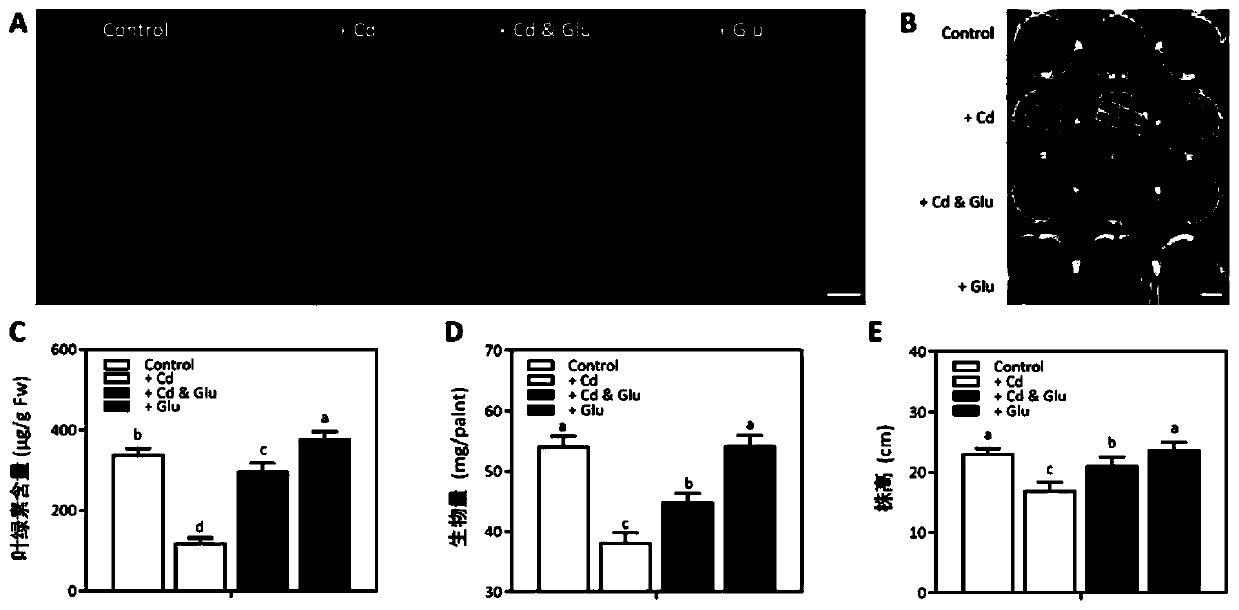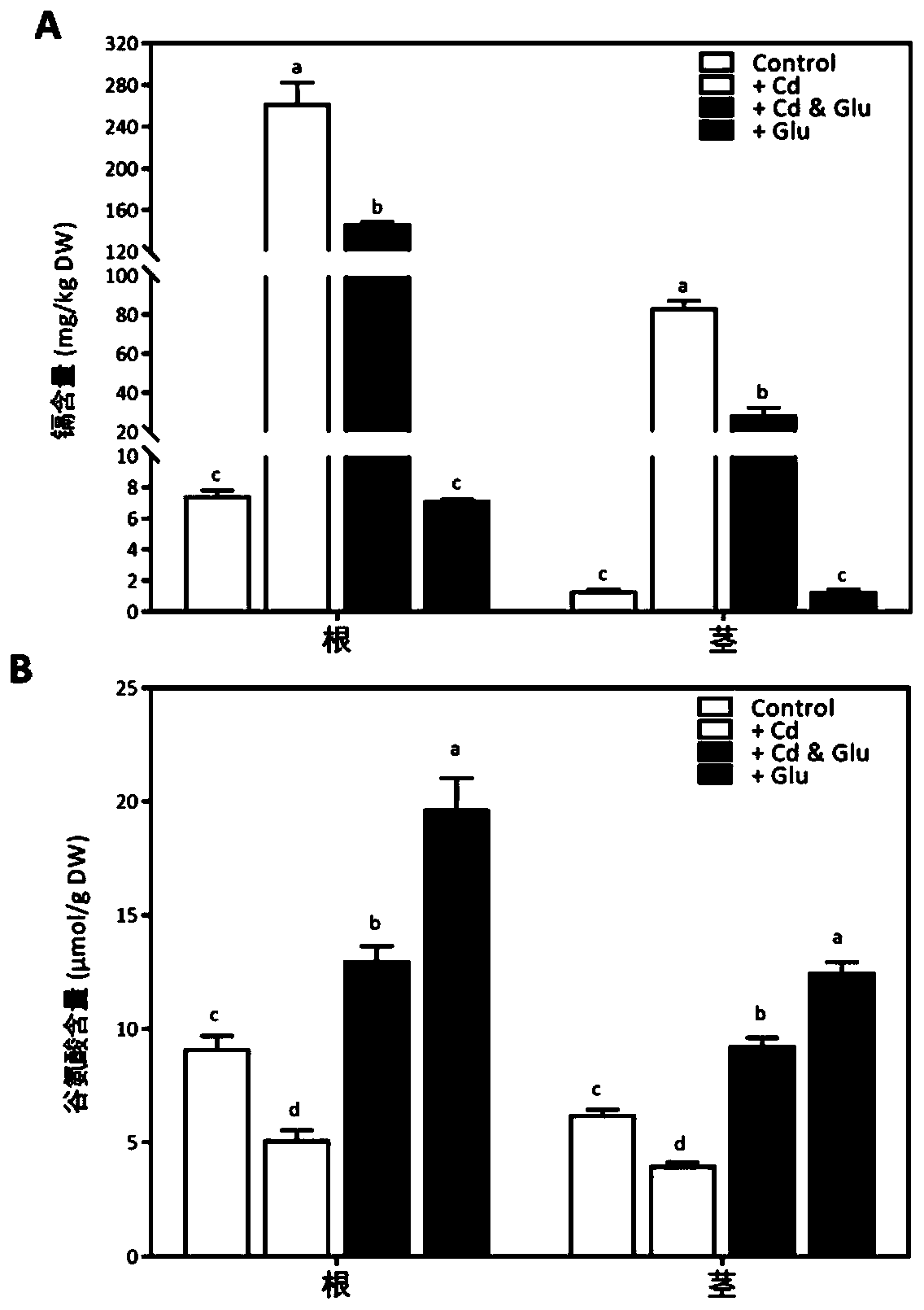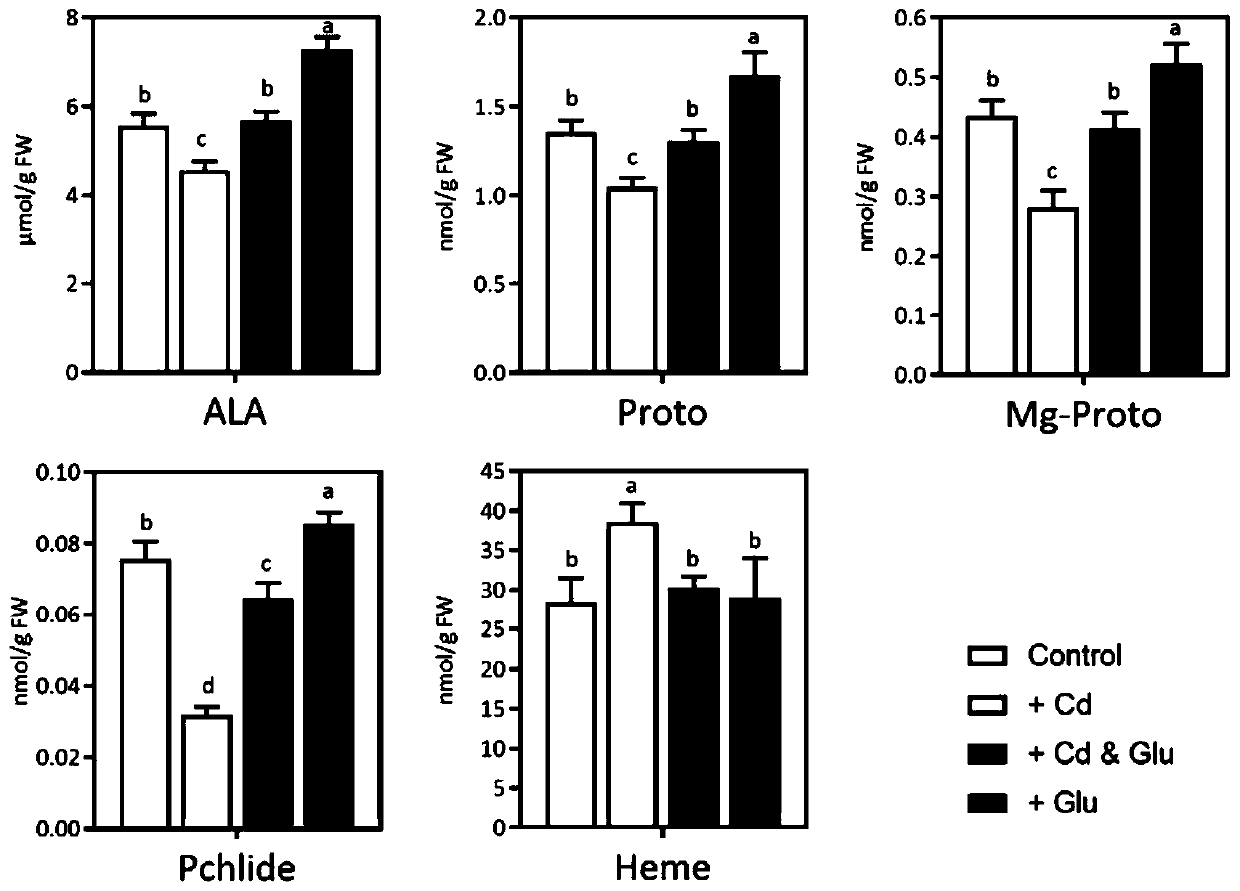Application of exogenous glutamic acid in alleviating cadmium stress of rice and reducing cadmium content of rice plants
A glutamic acid and rice technology, applied in the fields of application, rice cultivation, botany equipment and methods, etc., to achieve the effects of improving oxidative stress, increasing rice biomass, and reducing the accumulation of cadmium
- Summary
- Abstract
- Description
- Claims
- Application Information
AI Technical Summary
Problems solved by technology
Method used
Image
Examples
Embodiment 1
[0053] 1. Test materials and treatment
[0054] Select rice seeds with the same size and full grains (the rice variety used is Oryza sativaL.ssp.japonica cv.Nipponbare, cadmium-sensitive type), and disinfect them with 2% sodium hypochlorite solution for 15 minutes, then rinse them with distilled water 5 times, and then sterilize them at room temperature. Soak the seeds in distilled water for 24 hours. After 4 days of germination in an artificial incubator at 30 °C, the rice seedlings were transplanted into standard 1 / 2 MS liquid medium for culture, and placed in an automatic control growth chamber for culture. The growth chamber is set to light for 14 hours (30±2°C), dark for 10 hours (26±2°C), and relative humidity 40%-60%. When the rice seeds grow to 14 days, the seedlings with consistent growth are selected for transplanting.
[0055] The first group (Control), transplanted into the standard 1 / 2MS liquid medium without cadmium and glutamic acid, as the control (CK); the s...
PUM
 Login to View More
Login to View More Abstract
Description
Claims
Application Information
 Login to View More
Login to View More - R&D
- Intellectual Property
- Life Sciences
- Materials
- Tech Scout
- Unparalleled Data Quality
- Higher Quality Content
- 60% Fewer Hallucinations
Browse by: Latest US Patents, China's latest patents, Technical Efficacy Thesaurus, Application Domain, Technology Topic, Popular Technical Reports.
© 2025 PatSnap. All rights reserved.Legal|Privacy policy|Modern Slavery Act Transparency Statement|Sitemap|About US| Contact US: help@patsnap.com



